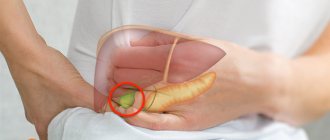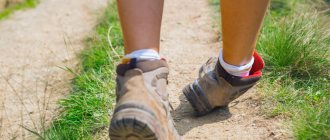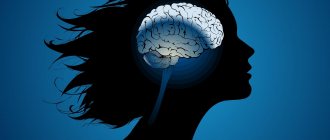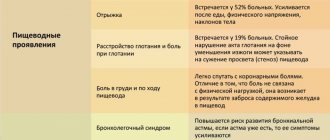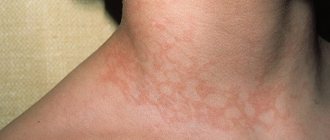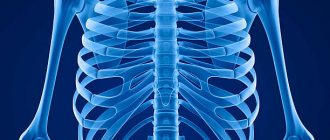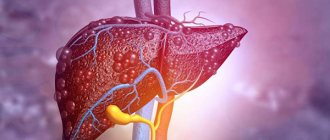Pain in the left side is always alarming. Many vital organs are concentrated in this area, which can thus signal malfunctions. The nature of the sensations varies. The pain can be dull, sharp, aching, bursting. The more intense it is, the sooner you need to seek medical help. However, you should not endure and eliminate even mild but long-lasting pain on your own. It can be a symptom of excessive exercise or constipation, or it can indicate kidney damage and even intestinal tumors. In women, left-sided pain is often a consequence of gynecological diseases.
Most often, pain in the left side is not the only symptom. It is accompanied by other signs indicating pathology or infection. Their correct interpretation will allow us to understand in which direction further diagnosis and treatment should be carried out.
What kind of pain can there be in the left side?
Pain in the left side is not always typical. It will differ depending on the disease that provoked it. Based only on the nature of the pain, it will not be possible to make an accurate diagnosis, but one or another pathology can be suspected.
Features of the pain syndrome:
- Blunt pain. It most often indicates damage to the female reproductive system.
- Dull pain accompanied by increased body temperature, fatigue and weakness is a sign of an inflammatory process.
- Nagging pain can act as a signal of suppuration of the inflammatory focus, especially if it occurs against the background of hyperthermia.
- Nagging pain without fever may indicate a strangulated hernia and cancer.
- A stabbing acute pain in the lower abdomen in women is a signal of ovarian rupture. It is intense and does not go away over time.
- Stitching migrating pain may be a symptom of intestinal overflow with gases. Similar sensations occur with damage to the kidneys and ureters.
- Sharp spasm-type pain can signal renal colic due to exacerbation of urolithiasis. Other causes include inflammation or rupture of the ovary, damage to the bladder.
Not only the nature of the pain, but also its concentration is of important diagnostic importance:
- Left hypochondrium: pancreatitis, diseases of the digestive system, damage to the spleen, myocardial infarction.
- Closer to the center: nonspecific ulcerative colitis, intestinal infections.
- In the lower abdomen: damage to the left ovary or appendage, hernia, constipation.
- With irradiation to the back: kidney disease, lung damage.
Pain in the left side, depending on the provoking factor:
- During meals.
- Due to a long period of hunger.
- After physical activity.
- Against a background of stress.
According to the mechanism of development, pain is of 4 types:
- Spastic.
- Peritoneal.
- Vascular.
- Distensional.
You should consult a doctor immediately if the pain is acute, intensifies and does not stop within half an hour. The situation can be aggravated by bleeding, high body temperature, vomiting, and lethargy. Such symptoms require hospitalization.
Characteristics of pain in diseases of the urinary organs
Urinary diseases occur in cases of pathology of the kidneys, bladder, and ureter. The localization we are studying includes local pain in the ureter caused by its stretching and radiating pain from the left kidney.
Pyelonephritis
Inflammation of internal structures (pelvis, calyces) caused by infection. It begins suddenly with high fever, vomiting, chills, pain in the lower back on the left, radiating to the left side of the abdomen. Impaired urination, pain, and urinary retention occur. Pulsating pain is an unfavorable sign indicating the formation of an abscess in the kidney.
In the chronic course, exacerbations are milder, but with the same symptoms. As a result, scars appear in place of the inflamed tissue, the kidney becomes deformed and loses function. Kidney failure occurs when the second healthy kidney stops working hard to compensate for the diseased organ. The disease is treated by urologists with antibacterial agents, diuretics, and, if necessary, by opening the suppuration or resection of part of the kidney.
Urolithiasis disease
Often accompanied by inflammation of the urinary tract and metabolic disorders. It is caused by the loss of crystalline sediment in the urine, its settling in the pelvis and gluing into stones. The most common compositions are phosphates, oxalates, and urates.
The stone causes a disruption in the process of urine outflow, so stagnation and distension form in the higher-lying sections. The movement of a stone along the ureter explains why the lower abdomen hurts. Clinically, after intense shaking or running, the patient experiences an attack of renal colic.
The pain is very intense in nature, cutting. Localized in the lower back or to the left of the navel. Acute urinary retention occurs. The duration of the attack is up to several hours. For emergency care, painkillers and antispasmodics are administered. Frequent recurrence of attacks is an indication for surgical removal of the stone.
Causes of pain in the left side
Pain in the left side is not always a sign of illness. There are often cases when its cause is physiological in origin. So, the left side can prick after excessive stress on the body. Training promotes a rush of blood to the abdominal organs, which fills the spleen. Therefore, after performing intense exercise, people often complain of discomfort in the left side. To eliminate it, just rest for about 10 minutes.
The next day after training, the abdominal muscles may feel pain in the left side. It intensifies with tension in the abdominal wall, when turning the body, coughing, and straining. Normally, the discomfort goes away within a few days.
Other risk factors that can cause left side pain include:
- Being in the cold. People say “it’s blown.” In this case, unpleasant sensations can radiate to the lumbar region, and sometimes there are complaints of shooting in the spine.
- Menu with consumption of fatty , fried, spicy foods, drinking alcoholic beverages. Problems may occur in people with previously diagnosed pancreatitis, gastric and duodenal ulcers.
- Injuries. Even minor bruises can cause pain for a long time. With rib fractures, your side may hurt for several months.
- Menstrual cycle. The intensity of pain depends on the individual characteristics of the female body. However, there should not be severe discomfort requiring painkillers.
Intestinal diseases
- Constipation. If there is no stool for two or more days, then a person may experience dull pain in the left side, in the lower abdomen. Additional signs: a feeling of fullness in the intestines, periodic urge to defecate, painful spasms, burning in the rectum when dry feces are released.
- IBS. With irritable bowel syndrome, the pain is concentrated in the left side. It can be dull and acute, occur like contractions or be present on an ongoing basis. The pain reaches its maximum intensity in the morning, after waking up. In this case, the person experiences severe discomfort and the urge to empty the intestines. After going to the toilet the pain disappears. Additional symptoms: several attempts to defecate in the morning, no discomfort at night, increased pain before menstruation (in women).
- Sigmoiditis. The inflammatory process in the area of the sigmoid colon is accompanied by intense pain in the left side, which radiates to the perineum and thigh. Additional signs: false urge to have a bowel movement, foul-smelling diarrhea, blood in the stool. If the process is in a chronic stage, then an increase in symptoms can be caused by nutritional disturbances and stress on the body physically or psychoemotionally.
- Diverticulitis. The formation of diverticula leads to pain in the left side, which increases in severity during bowel movements. After its completion, the discomfort goes away. If the patient develops constipation, the pain becomes more intense. Attacks are rare, but sometimes they can last up to several days. Additional signs: flatulence, unstable stool, in which constipation alternates with diarrhea.
- UC. In this long-term and sluggish process that accompanies intestinal inflammation, the pain is concentrated under the ilium on the left. As the disease progresses, it spreads to the entire left half of the abdomen. Additional signs: loose stools with blood, which is noticeable to the naked eye, loss of appetite, false urge to have a bowel movement, accompanied by pain.
- Polyps. Benign neoplasms are accompanied by a dull pain that can radiate to the left side. The larger the tumor, the greater the discomfort. Additional signs: constant constipation, which occurs due to a mechanical obstruction in the path of feces.
- Cancer of the sigmoid or colon. At first, the patient experiences a certain discomfort; as the tumor grows, it turns into severe pain that bothers him on an ongoing basis. Additional signs: stool disorders, blood in the stool, constipation, diarrhea.
- Left-sided inguinal hernia. The pain is dull, becomes pronounced when the abdominal wall is tense, when bending and turning the body. When a hernia is strangulated, the pain becomes very severe.
- Dysbacteriosis. Disorders of the intestinal microflora often develop when taking antibacterial drugs. Discomfort is constantly present, intensifying after eating and before attempting to empty the intestines. Additional signs: feces have a strong smell, stool occurs up to 7 times a day, gas formation increases, appetite disappears.
Intestinal infections
Amoebiasis, dysentery, escherichiosis, salmonellosis. The entry of infectious agents into the intestines leads to painful sensations in the left side, which occur like contractions. The disease manifests itself approximately one day after infection. Additional signs: diarrhea, stool can occur up to 20 times a day, stool with blood and mucus.
Pancreatic damage
- Chronic pancreatitis. The pain is concentrated in the left side, it is weak, aching, but present on a constant basis. A tendency to increase is observed with errors in nutrition with the consumption of fatty foods. Additional signs: constipation alternating with diarrhea, increased gas formation, rumbling in the stomach.
- Acute pancreatitis. The pain is unbearable, concentrated in the left hypochondrium, and occurs suddenly. Strengthening occurs in the supine position and on the left side. Additional signs: vomiting, high fever, feeling unwell.
Diseases of the female reproductive system
The most common causes of pain in the left side in women:
- Adnexitis (inflammation of the left appendage of the uterus).
- Ectopic pregnancy concentrated in the left tube.
- Endometriosis.
The intensity of pain depends on the degree of progression of the pathological process. However, it will always intensify a few days before the onset of menstrual bleeding. Additional signs: pain during intimacy, spreading to the pubis and perineum.
Diseases of the urinary system
- Left-sided renal colic due to urolithiasis. The pain does not stop, it exhausts the person, occurs in the form of attacks, and spreads to the lumbar region, lower abdomen, and perineum. Additional signs: urination is difficult or absent at all, hyperthermic reaction.
Diseases of the stomach and intestines
- Gastritis and stomach ulcers. With these pathologies, pain radiates to the left hypochondrium. They can be aching and dull, and during exacerbation - cramping. Additional signs: symptoms intensify after eating, stool disorder is observed, most often in the form of diarrhea.
- Duodenal ulcer. The pain is concentrated in the left hypochondrium and in the epigastric region. Increased discomfort is observed on an empty stomach and at night. Additional signs: nausea, belching, constipation and diarrhea.
Spleen damage
- Spleen injuries. The pain is severe and can radiate to the shoulder. Its intensity depends on the severity of the organ damage.
- Splenic infarction. The pain is concentrated in the left side and under the ribs, radiating to the shoulder blade and to the heart.
- Abscess of the spleen. The pain is severe, throbbing, and can radiate to the lower back. Additional signs: fever, weakness, digestive disorders.
- Thrombosis of the splenic vein. The pain is paroxysmal, concentrated in the left hypochondrium. It is not related to food intake or exercise. Additional signs: vomiting blood.
Intercostal neuralgia
The discomfort is concentrated in the left hypochondrium and radiates to the left side. Patients indicate lumbago, reminiscent of electric shocks. Provoking factors include uncomfortable body position and physical activity. During an attack, a person tries to avoid taking deep breaths so as not to increase the pain.
Rare causes of pain
- Tietze syndrome. With this disease, the cartilaginous segments of the ribs become inflamed. When the lower left ribs are affected, the pain is concentrated in the left side. The disease can be provoked by injuries to the sternum and excessive physical stress. Young people under 35 years of age are most often affected.
- Angina pectoris. Pain when the heart muscle is damaged can spread to the left hypochondrium and radiate to the arm. Additional signs: the attack lasts 15 minutes, it can be relieved by taking nitroglycerin.
- Some hereditary diseases. Pain in the left side can occur with porphyria and histiocytosis X.
- Pregnancy. Pain in the left side occurs when the intestinal loops are compressed by the enlarged uterus. Women may complain of constipation.
Signs when to call an ambulance
Abdominal pain is an alarming symptom that often requires immediate examination by a medical professional. You need to call an ambulance in the following cases:
- severe, sharp or acute pain occurred suddenly, against the background of complete health;
- increased temperature;
- blood or mucus in stool;
- the patient feels an exacerbation of chronic pathology, which is severe;
- lack of stool and gas;
- lack of urine with preserved or absent urge;
- blood in urine;
- dyspnea;
- cold sweat;
- fainting state.
When should you go to the doctor?
Discomfort in the abdominal cavity on the left almost always requires attention. You can ignore the pulling, aching sensation in the side at waist level only if this moment is associated with an awkward movement, muscle overstrain, or strain. If the syndrome quickly disappears and is not combined with other symptoms, you can relax and not go anywhere.
But if the pain on the left (lower abdomen or at waist level) is constant and/or pronounced, combined with other signs of various ailments, you should definitely see a doctor. This is necessary to determine the cause of discomfort, as well as to prescribe the correct treatment if a disease is detected.
Useful articles on the topic: Pyelonephritis in women: causes, classification, symptoms and treatment Kidney disease in women: symptoms, diagnosis and treatment Polyp in the intestines What can be taken for stomach pain: a review of medications
This article has been verified by a current qualified physician, Victoria Druzhikina, and can be considered a reliable source of information for site users.
Rate how helpful this article was
4.3 53 people voted, average rating 4.3
Did you like the article? Save it to your wall so you don’t lose it!
Diagnostics
Diagnosis of the cause of abdominal pain begins with interviewing the patient and palpating the area about which the patient complains. Often the doctor gets the data he needs by palpating the intestines. Women with complaints of pain in the left side are referred to a gynecologist for consultation.
The following tests may be needed to confirm the diagnosis:
- Contrast radiography of the intestines, irrigoscopy.
- Colonoscopy. This method allows you to visualize the intestines from the inside, detecting areas of inflammation or neoplasm.
- Ultrasound of the abdominal organs. It is prescribed for suspected damage to the spleen and pancreas.
- Ultrasound of the pelvic organs. It is indicated for women with suspected gynecological diseases.
- Taking tests: stool, urine, blood.
- Endoscopy is prescribed to patients with gastric and duodenal ulcers and gastritis.
- MRI and CT. These complex diagnostic procedures are prescribed when cancerous tumors are suspected. With their help, it is possible to visualize hernias.
- ECG in 12 leads. An examination is required if damage to the heart muscle is suspected.
After receiving the results, the doctor will select the appropriate therapy for the patient.
Advantages of MC “HEALTHY FAMILY”
WE USE ONLY EUROPEAN, AMERICAN AND SOUTH KOREAN DRUGS ALL DRUGS ARE CERTIFIED YOUR COSMETOLOGIST HAS ABOUT 30 YEARS OF EXPERIENCE LOW PRICES FOR 100% US WE HAVE BEEN WORKING FOR COSMETOLOGICAL SERVICES OVER 1000 PATIENTS SINCE 2006 LOW COST OF BOTOX FROM 200 RUB. PER UNIT WE PROVIDE MORE THAN 5,000 COSMETOLOGY PROCEDURES PER YEAR
Cost of treatment for ovarian cysts
Ovarian cysts are a fairly common disease, which, despite a favorable course, can lead to a number of serious complications. To maintain women's health and diagnose as early as possible, you need to regularly visit a gynecologist and undergo preventive examinations.
With early diagnosis, specialists prescribe conservative treatment followed by physical therapy, but if large formations are detected, a tendency towards malignancy or other complications, surgery may be required. The cost of treatment depends on:
- Forms of education.
- Conditions of a woman.
- Presence of complications.
- The chosen treatment method.
You shouldn't skimp on your health. Contact qualified gynecologists and forget about living with pain.
Treatment
If the pain is provoked by physiological factors, then therapy is not prescribed. It is enough to reduce the load on the body and wait for the discomfort to disappear. This takes no more than 3 days.
When pain in the left side is caused by constipation, the menu is adjusted. Vegetables and fruits rich in fiber are introduced into the diet, and fermented milk drinks are added. Compliance with the drinking regime is mandatory.
With irritable bowel symptoms, eliminating stress factors comes to the fore. Sometimes consultations with a psychologist can help cope with the disease.
To make the patient feel better until complete recovery, painkillers and anti-spasm medications can be prescribed. Sometimes anesthetics are administered in the form of blockades. This approach will not eliminate the cause of left-sided pain, but will only muffle it.
Depending on the diagnosis, medications are selected:
- In case of dysbacteriosis, correction of the microflora is required; enzymes can be added to the therapeutic regimen.
- For constipation, suppositories, laxatives, and oils are used.
- To treat intestinal infections, a drug is selected that will affect the pathogenic flora. Antibiotics are rarely used.
- If the pancreas is damaged, follow a diet. After the exacerbation is relieved, digestive enzymes are used.
Surgery may be required in severe conditions, for example, in the presence of cancerous tumors in the intestines, rupture of the spleen, complications of diverticulitis, and more. The decision about the advisability of surgical intervention is made by the doctor.
Physical procedures
Painful sensations can be caused by physiotherapeutic treatment, only in rare cases. The cyst may remind itself after undergoing a magnetic therapy procedure, but only if the woman resorted to self-medication and underwent the procedure without consulting a gynecologist.
Physiotherapeutic treatment does not act as an independent method, but is used only in combination with other methods. Typically, such procedures are resorted to during the rehabilitation period to prevent the formation of adhesions, normalize blood circulation, and stabilize hormonal levels.
What to do if you have pain in your left side?
You should not endure pain in your left side; you should seek medical help. If the situation is not an emergency, and the diagnosis has not yet been established, it is necessary to follow a diet, eating soft foods (meat soufflé, pureed dishes). Spicy, salty, and spicy foods are excluded from the diet. Products must undergo gentle heat treatment, frying is excluded.
Acute “dagger” pain requires calling an ambulance. In most cases, such a symptom requires emergency surgical intervention.
Diaphragmatic abscess
If sharp pain in the diaphragm occurs during a sigh, this may be a sign of a diaphragmatic abscess. With this disease, the pain is very severe and intensifies when coughing, sneezing, sighing, or making a sharp turn. The pain often radiates under the collarbone.
The patient tends to take a semi-sitting position or lies on his side. The pain is accompanied by high fever and a condition that occurs during poisoning. A diaphragmatic abscess occurs as a result of surgery, trauma to the abdominal cavity and internal organs, peritonitis during appendicitis, acute cholecystitis, and perforated ulcers.
Oncological diseases of the stomach
Ultrasound as a diagnostic method
With gastric cancer in the later stages, pain may occur in the middle of the sternum under the ribs. The sensations appear after the tumor spreads and begins to compress the surrounding tissues. In the initial stages, the disease is asymptomatic. The following signs will help diagnose the disease:
- Weight loss
- Dislike of many foods, especially meat
- Anemia
- Intoxication of the body
- Yellowish and pale skin color
- Yellowing of the sclera
- Increasing weakness
- Low performance
- Poor mental state (severe depression)
- Loss of interest in other people and their actions
- Apathy
Girdle pain in the hypochondrium can be a symptom of many diseases, most often it is a sign of pancreatitis. However, it is impossible to establish an accurate diagnosis using only one symptom. Therefore, a complete examination of the patient will be required before the doctor prescribes treatment.
Renal colic
Pain under the ribs at the back is a characteristic manifestation of renal colic. The pain syndrome is pronounced, the patient cannot find a position in which this condition could be alleviated. This unpleasant sensation radiates to the thigh and groin area.
Very often, to relieve pain, it is enough to apply heat to the sore spot and take antispasmodics. However, doctors do not advise taking any action on your own. The patient should go to the hospital to avoid infection of the urinary system. In the hospital, an experienced doctor will make an accurate diagnosis.
If the pain cannot be relieved for a long time, this may be a sign of a complication of the disease. For example, it can lead to hydronephrosis of the kidney, a very serious disease that can be accompanied by complete dysfunction of the organ and, as a consequence, the death of the patient.
Ulcerative lesions of the stomach and duodenum
With stomach and intestinal ulcers, subcostal pain is cyclical in nature: it intensifies at night. The pain radiates to the left side of the chest, lower back and back. An exacerbation of ulcers most often occurs in the off-season. During the pain characteristic of an ulcer, patients squat down, clasping their stomach with their hands, or lie down on the sore spot in the hope of getting rid of this condition. In patients with gastritis and ulcers, pain increases while eating or when hungry.
The pain intensifies with physical and nervous stress and is relieved by antacid medications, drinking soda or when exposed to heat. Associated symptoms:
